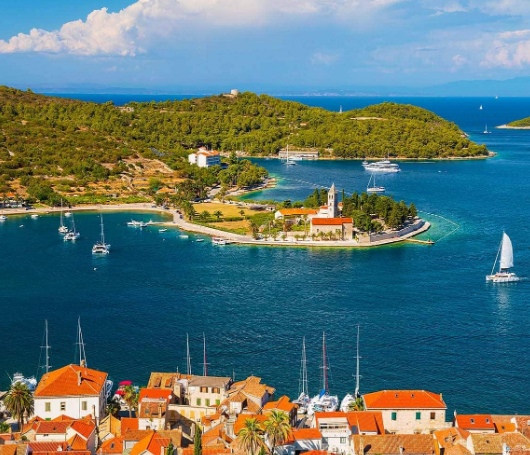
PATHWAY TO A LOW-CARBON ENERGY SYSTEM IN VIS, CROATIA
Overview
To support long-term energy planning in insular areas, an analysis was conducted for the Island of Vis, considering local renewable energy (RES) potential, demographic trends, and environmental protection. Three energy scenarios were evaluated: LowRES (business-as-usual approach), RES (moderate renewable integration), and HighRES (full renewable transition). The results indicate that Vis has significant potential for solar energy generation, with moderate wind energy potential, and that vehicle-to-grid (V2G) technology can play a vital role in balancing the system, especially for wind generation situated further away from the coast, and in managing the volatility of the power supply. The HighRES scenario demonstrates that a fully renewable energy system is feasible with strong municipal support and strategic investments.To achieve this, the island could facilitate the formation of an Energy Community, prioritizing solar Photovoltaic (PV) installations on public and private buildings. Public buildings should lead by adopting heat pumps for heating and cooling, coupled with the installation of Electric Vehicle (EV) charging stations. Wind power would also be of asset and would support the optimal configuration of the power system. Encouraging residential PV adoption and implementing public awareness campaigns on smart charging and vehicle-to-grid solutions will further support a sustainable energy transition.
a)
Figure 1 Monthly representation of technologies contributing to the power supply in a) RES (with Solar being the RES in question) and b) HighRES scenario, with import representing the necessary additional energy that would be imported from the national grid (case study area is grid-connected)
Socio-Economic Feasibility Analysis
Investment in power generation and storage technologies was assessed. The HighRES scenario, 2.5 times as expensive as the RES scenario, enables a faster decarbonization timeline. Therefore, the cost of the HighRES implementation is offset by long-term sustainability and energy independence. Local job creation is significant, with employment opportunities mainly in RES installations, maintenance, and grid flexibility solutions. Additionally, it was determined that public-private partnerships can accelerate the adoption of RES technologies as well as that V2G technology enhances grid stability, reducing the need for additional storage investments.
Macro objective:
- Demonstrate the feasible integrated energy system for an insular community, based 100% on locally available renewable energy sources
Specific objectives:
- Use locally available renewable energy
- Decarbonize sectors of energy demand
- Provide socio-economically sound options for the development of an island community
Impacts that could be achieved by 2030:
- CO2 emissions reduced by 3.895 kt per year
- New RES installations: 12.05 MW Solar PV, 3.5 MW wind power
- Local employment benefits: 7+ sustainable jobs in RES installation and maintenance
Read more here.
Learn More about the PRISMI Methodology.
Contact
Antun Pfeifer
Technical transferring partner in the PRISMI PLUS project



